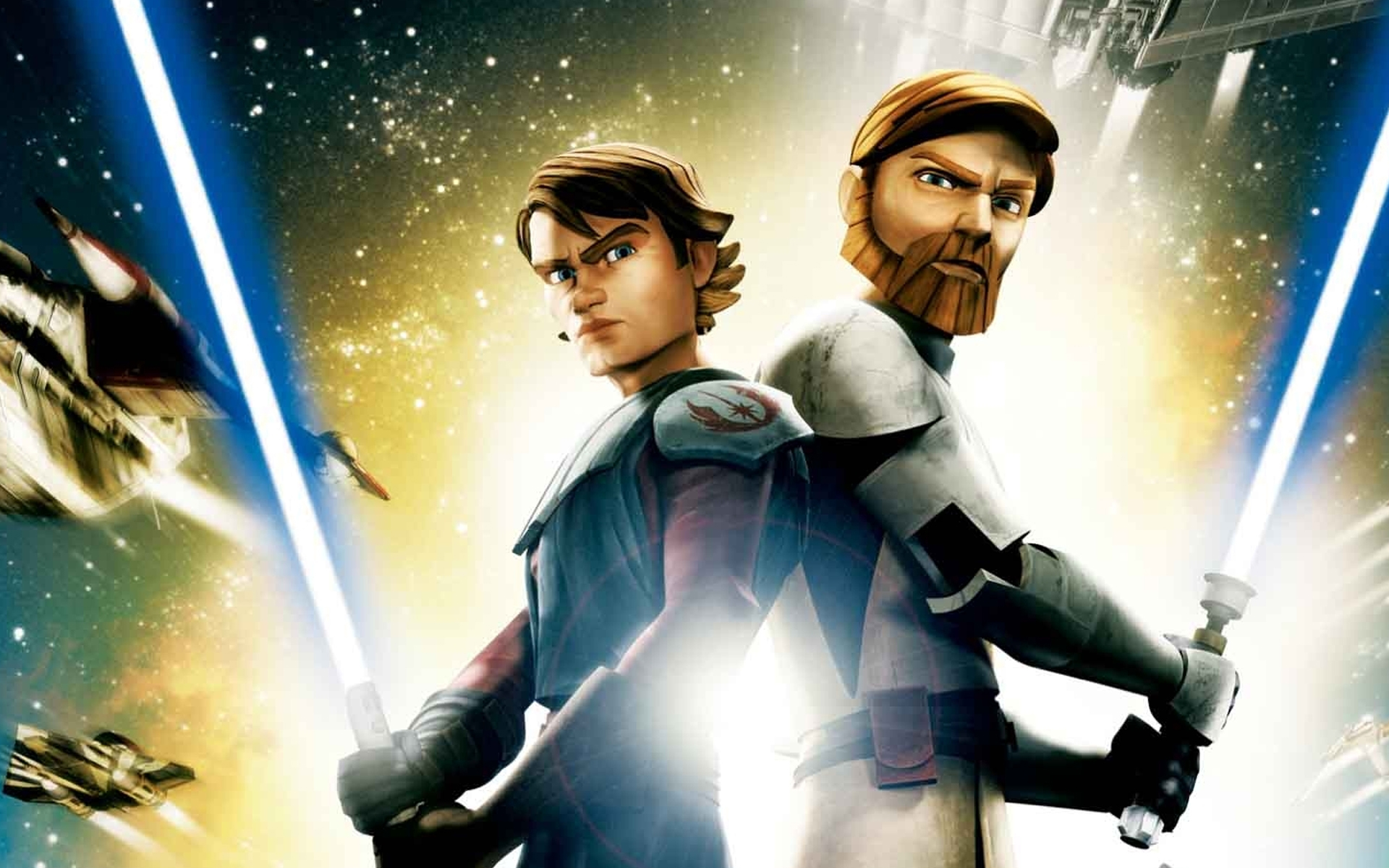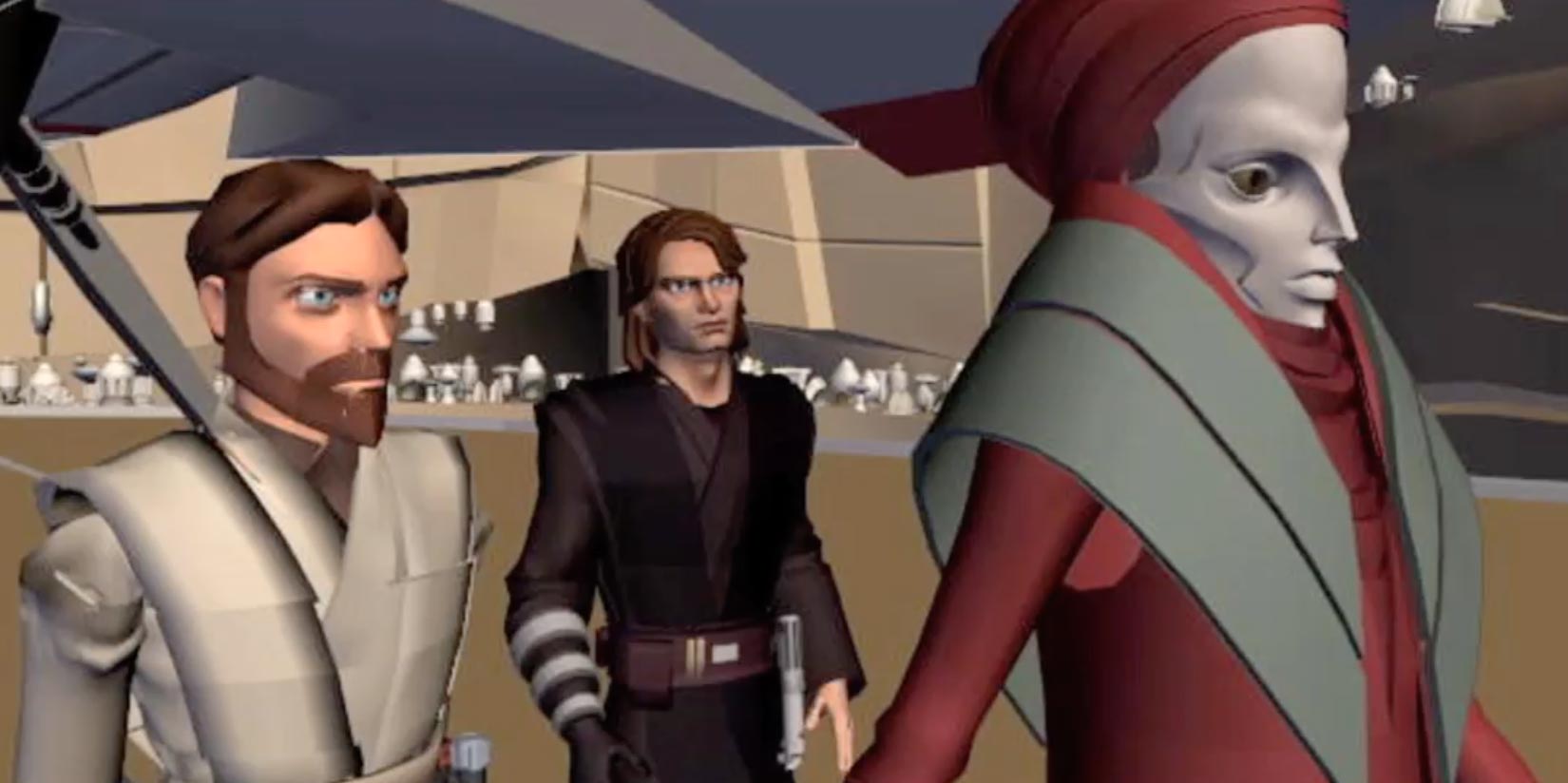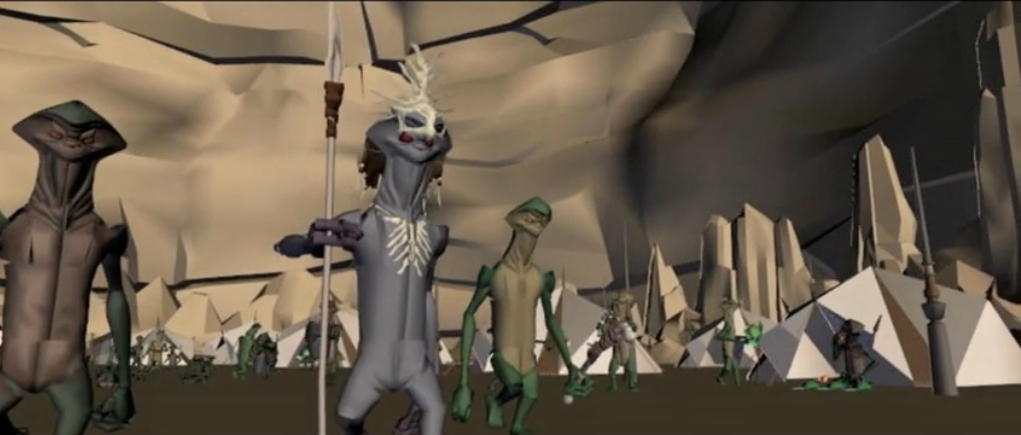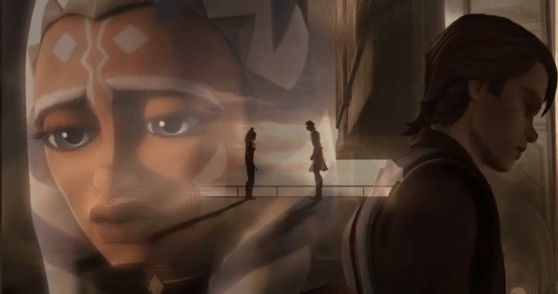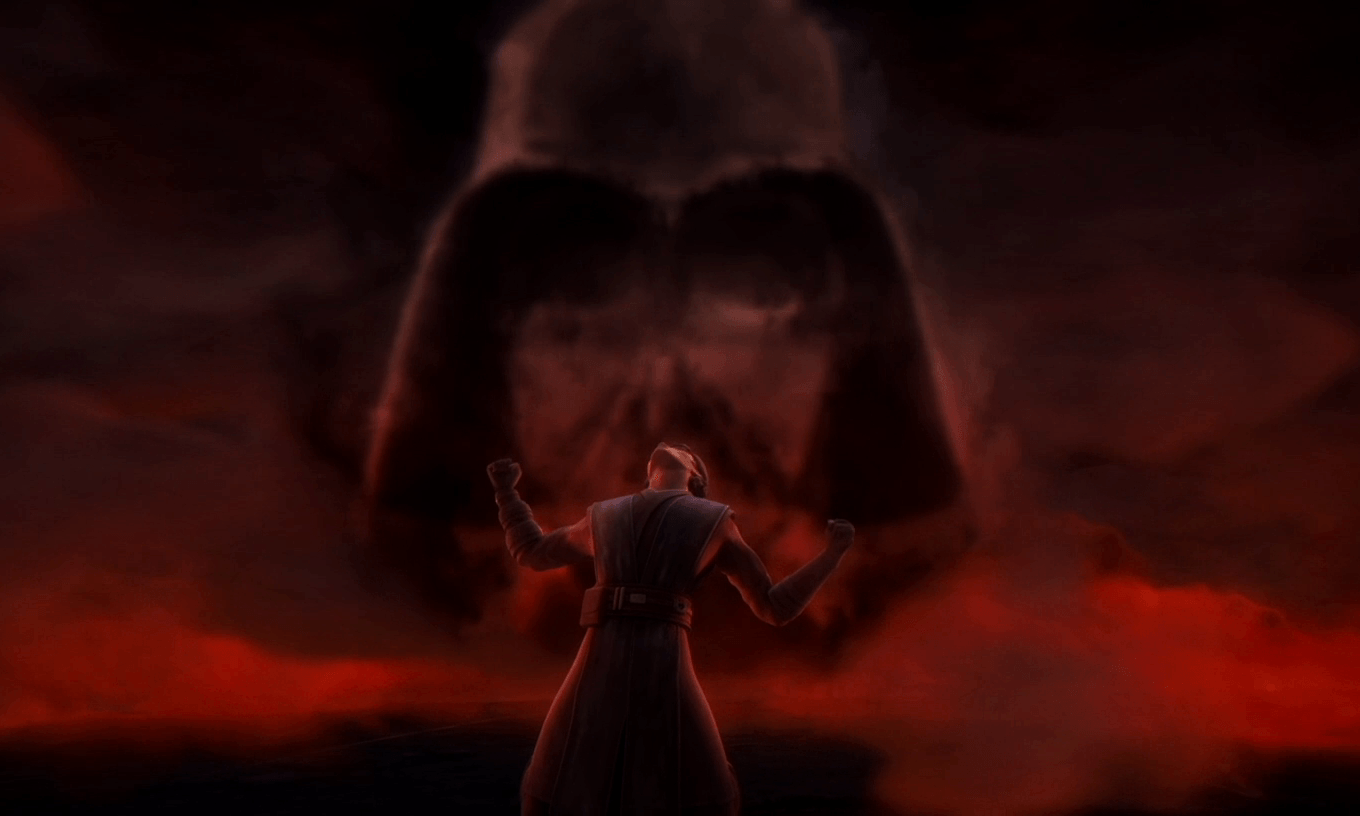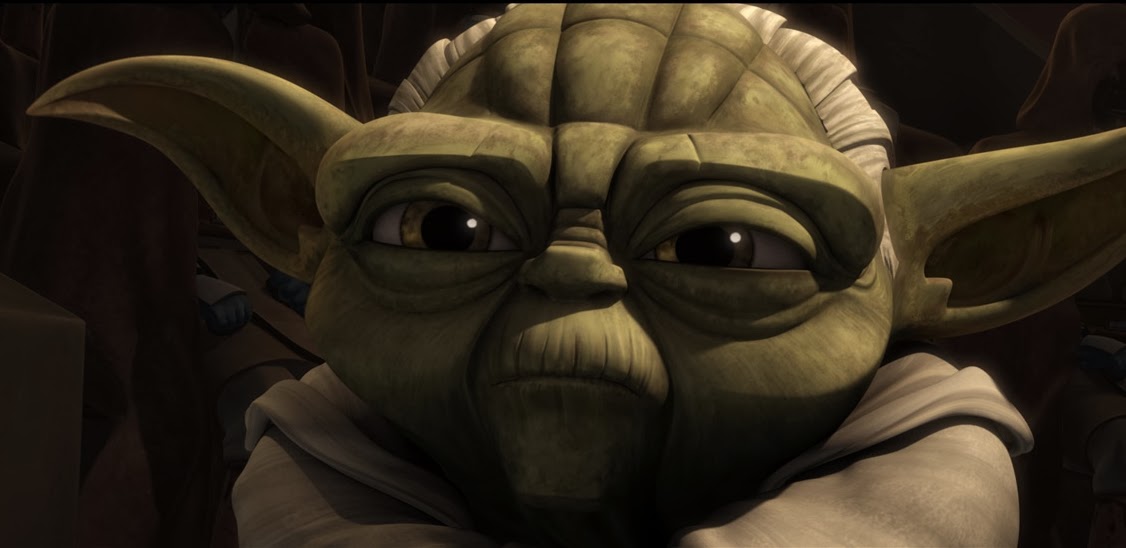Greetings Bothans! What follows is a post about the recent Star Wars: The Clone Wars Crystal Crisis arc by friend of the Star Wars Report, Joseph Tavano! Be sure to check out Joseph’s new website RetroZap, a pop culture and narrative art site which currently has some of his thoughts on Star Wars Rebels. Without further ado, I’ll turn it over to Joseph! ~ Bethany Blanton
In 1985, there existed a fully formed concept for The Clone Wars. It was conceived entirely in my five-year-old mind. I envisioned the Jedi overrun by scores of doppelgangers sent forth by their Dark Side enemies, invading the universe and attacking the true Jedi from within. I imagined the Clone Wars to be a hall-of-mirrors nightmare across the galaxy where nothing could be trusted and danger was omnipresent.
When The Clone Wars was finally realized on screen, I was way off the mark. And yet, that’s an aspect of Star Wars I love more and more as the Galaxy Far, Far Away grows and matures. One of the best things that Lucasfilm has managed to do is to keep Star Wars moving in new directions virtually no one would have predicted. With every new installment, audiences get to cast off preconceived notions and fastidious theories for an inspired, radically unique story that is not afraid to go down roads less traveled.
Dave Filoni and the writing team of The Clone Wars kept this trailblazing spirit alive for over six seasons, chronicling the events of a three-year war that transpired in a way no one would have ever predicted. Ten years ago, we were left to assume that the wars were going to be a nonstop conflict similar to the battle on Geonosis in Attack of the Clones. Clone troopers versus battle droids. Blaster fire everywhere. Lightsabers leading the way through the fog of war. And, in their tour of duty, Anakin Skywalker and Obi-Wan Kenobi would become brothers-in-arms, inseparable throughout their legendary adventures across the galaxy.
Again, that isn’t exactly how things went down. We came to know Ahsoka Tano, padawan extraordinaire to Anakin Skywalker, who, after many adventures, left the Jedi amidst scandal and distrust. New bounty hunters emerged to wreak havoc. Darth Maul returned. But, the great majority of the adventures of Anakin and Obi-Wan that were so fondly referred to in Revenge of the Sith seemed to have happened off screen, some time before or after the events of the series.
Until now.
In a bold move, StarWars.com released an all-new Clone Wars story arc set after the events of season six. Under the title “The Clone Wars Legacy,” fans of the series now have access to a new featurette discussing further plans to use undeveloped scripts, concept art galleries, and four fully voiced episodes of the series. Though only in animatic form and visually unfinished, the voice acting in these episodes by Matt Lanter and James Arnold Taylor is easily the finest of the series’ run. We are treated to a canon story that’s not only fun, but important to the development of the characters we see in Episode III and the events of the saga at large. This arc encapsulates the Butch Cassidy-Sundance Kid adventures of Obi Wan and Anakin so often referenced but rarely seen.
This time, we don’t get to see the duo fall into a nest of gundarks or deal with that business on Cato Neimoidia (“that doesn’t…doesn’t count”)—the duo are off to Utapau. At first thought, this may sound a little convenient, because Kenobi will ultimately return here sooner than later for a deadly duel with General Grievous. The challenge therein lay with the creative team to prevent Utapau from becoming too small and too obvious a hideout after this arc. However, the outcome had the exact opposite effect. Filoni succeeded in expanding Utapau by using it as a backdrop for this story, taking us to places never before seen, both above and below the surface.
We learn more about Pau’an culture as well. It views itself as a neutral sanctuary and a melting pot of species, with the majority groups being the native Pau’ans and Utai along with immigrated populations of savage Amani and the cunning Sugi, arms dealers of small stature often seen in large insectoid power suits.
Also, Utapau is wary of Jedi, who are considered to be harbingers of bad tidings.
Factor in the awe-inspiring sinkhole cities, the beautiful grasslands, and the various wildlife that’s also quite vehicular, and Utapau rises easily to one of my top favorite planets in Star Wars.
Thus, the stage is set for “A Death on Utapau” the first episode of the arc. Anakin and Obi-Wan travel to Utapau to retrieve body of Jedi Master Tu-Anh, long considered a maverick similar to Qui-Gon Jinn, who died while conducting a rogue investigation. Anakin and Obi-Wan use an arcane Force technique to detect her neurological activity and emotional state when she died, and suspect her investigation ran afoul. Further investigation reveals she was killed with a precision laser dart directly into the eye, and after a run-in with a sneaky Toydarian (charmingly voiced by none other than veteran Clone Wars actor Stephen Stanton), our Jedi are in pursuit of a group of Amani who may be helping the Separatists acquire a powerful weapon. Though no longer headhunters, the Amani are primitive, fierce warriors who can curl their entire bodies and roll at incredible speeds. It’s very satisfying to finally see more of this species other than Amanaman hanging out at Jabba’s palace. After an underground encounter with a huge creature, Anakin and Obi-Wan find magnaguards, the personal fighting force of General Grievous, and where there’s smoke, there’s fire. A high-speed chase ensues and before all the droids are dispensed of, the Jedi retrieve vital information from one of the droid’s databanks. The Sugi, who are notorious arms dealers throughout the galaxy, are involved, and are hiding out in the plains of Utapau. The Jedi will search there next, but not before a proper funeral is given for Master Tu-Anh, replete with a pyre and informative chatter about what is to come.
“A Death on Utapau” is dense, action-packed Clone Wars storytelling at its best, and while the plot is straightforward, the dialogue is varied, lively, realistic and engaging to listen to. Taylor and Lanter are at the top of their game here and writer Daniel Arkin needs to be commended for the exceptional banter between Anakin and Obi-Wan. Never before has Lanter played Anakin as impulsive, as angry, or just plainly funny, and Taylor’s timing and dramatic range is perfect. (Can an animatic released online win an Emmy?) These two display a casual ease in the constant needling with witty quips and jokes. This is conversation between friends, not performance or public show. Nothing is forced. It’s the glimpse into their relationship we’ve always wanted but only saw on the fringes. Taylor has said this is one of the final arcs they ever did and the strength of that relationship and shines through. It makes me crave more from these two, perhaps in audio dramas if nothing else.
Surprisingly, watching the animatic has an interesting effect. With so much less visual information to process, I tended to notice the shot framing, camera movement and editing much more, and found it very rewarding in its own way.
Part two, “In Search of the Crystal,” contains one of the most emotionally rewarding moments of the series, as well as its most heartbreaking. The fortune cookie said it all: “The journey is more important than the destination.” This episode finds our Jedi on the open plains of Utapau in search of an Amani tribe that they find armed to the teeth with precision laser darts. Interestingly enough, it’s an image that evoked parallels to nineteenth century Native American tribes in the American West. There is something to be said about the use of guns and weaponization in this arc; it merits further analysis at a later time. As they continue on their journey, Anakin casually refers to Ahsoka as if she were with them, and the episode takes a decided turn towards the introspective.
This is the moment we’ve been waiting for since the end of season five, and the reason it seems that this arc had to be released at all costs. It’s a heartbreaking discussion between Anakin and Obi-Wan, who see things from different perspectives when it comes to Ahsoka: Anakin feels the Jedi Council turned their back on her, while the Obi-Wan reflects that it was her choice to leave, and that her emotions clouded her judgment. The flaw in Jedi dogma is laid bare in this discussion, as well as the repressed frustration and anger in Anakin that has never been more at the surface than in this arc. “How would you feel if I turned into a major disappointment?” Wow, such heavy, foreboding stuff is all on the table. We see Anakin’s guilt, embarrassment, and anger for Ahsoka’s decision to leave as well as the aftermath he had to deal with. Obi-Wan seems to know exactly what to say, though. His attachment and pride in Anakin shines through.
In the morning, we learn Anakin has planned, albeit haphazardly, for the duo to be captured by the Sugi rather than chase them down. Anakin’s casual killing is becoming much more frequent. He’s more reckless after Ahsoka. It’s like watching a car moments before it begins to drift out of control.
Finally, we are brought to the Sugi camp to meet their leader—the charismatic Endente, voiced by iconic actor James Hong, whose performance is fun and brilliant and much too short. The Sugis bring Anakin and Obi-Wan to their ship, where they are carrying what looks like the mother-of-all kyber crystals, the tiny power sources for all lightsabers. Where they got this massive rock is a mystery, but they have it and the Separatists want it. The Jedi put a stop to that, escaping their bonds and taking control of the ship. In the process, we get the odd yet fascinating chance to see Anakin wield guns. It almost looks perverse in how simply he can dispense of enemies with the uncivilized things. However, despite the weighty material in the middle of the episode, there is a lot of fun as well. We’re treated to gems like, “That’s no mound, that’s a spaceship,” and “The ventilation duct is never a good place to hide!” I have a feeling the cast and crew are pulling out all the stops here, and it all feels very rewarding.
Part three, “Crystal Crisis,” is perhaps the lightest of the four-part arc, and serves to put the characters in place to bring the arc towards its conclusion. Anakin and Obi-Wan attempt to shuttle the giant kyber crystal into the hands of the Republic but are left stranded on Utapau, with the crystal falling into the hands of General Grievous by way of a betrayal by Pau’an Governor Blom. Grievous kills him before taking off, paving the way for Episode III’s Tion Medon. In the process, we are treated with some delightful scenes. Obi-Wan performs a Jedi mind trick, and the two Jedi have a hilariously mundane conversation about the best process to lower the giant crystal using the Force. It’s the peek into the average day of a Jedi I’ve wanted for three decades. In terms of direction, I noticed a great oner long shot through the Sugi camp makes me wish for this arc to be completed. We also get to see Obi-Wan lose his cool in an atypical bout of frustration, and the crystal’s true power is revealed when some poorly aimed blaster fire hits it, causing it to emit an amplified green blast. It’s basically a massive, uncontrolled lightsaber.
If you haven’t guessed by now, this type of massive kyber crystal is what powers the Death Star’s planet-busting super laser. In a stroke of morbid irony, the same material that powers the weapon of the Jedi also powers the ultimate weapon of the Empire.
Part four of the arc is called “The Big Bang,” a clear foreshadowing of the climax of this episode. It may have the best (most hilarious) fortune cookie of any Clone Wars episode: “If at first you don’t succeed, destroy it.” Clearly, that is what our heroes are going to do. They have failed to transport the crystal securely, only for it to be recaptured by the Separatists, who are coming very close to prying it entirely out of Anakin and Obi-Wan’s grasp. In a rare moment, Yoda chides Obi-Wan for being cavalier! It’s a great lesson that even the best of Jedi must not forget their discipline and training. All in all, Obi-Wan may not be at the top of his game in this episode. He is captured and loses a duel with Grievous. Not the best day.
Again, the dialogue truly shines. Anakin calling Kenobi “old man” is priceless. The number five special and the Yavin code are instant-classic moments. The space battles are the best of the series, even in animatic form, and feel so much like Episode III. In the end, Anakin and Obi-Wan overcharge the crystal, destroying it as well as the space station, and make their way to Coruscant. Grievous escapes, of course, in a swaying scene similar to Vader’s escape in A New Hope. In terms of continuity, with the governor dead and the crystal destroyed, there’s no reason or motive to suspect Grievous would ever return here, although we know he does.
Back at the Jedi Temple, we learn more about the giant kyber crystal. They were once widely known in ancient times, when the Jedi and Sith battled for control of the galaxy, but until now were only the stuff of legend. Yoda is clearly distraught, because these crystals powered weapons of unimaginable destructive power. I see a shift in Yoda. All his thought is bent on the Sith lord now, the details of war not as significant. It’s a clear progression since last we saw him in season six, and is a great set up for Episode III.
This is the third time I’ve looked the end of this series in the face. Unfortunately, I think it’s the last as well. From what I can tell, there are literally no more completed episodes from the cast, and many of the remaining stories are being converted into comics and novels. I do have faith that with the success of the Crystal Crisis arc on StarWars.com, we may see more stories come to light in one form or another. It is a measured hope, tempered with deep gratitude that we have been granted so much material since the official end of the series in 2013. Perhaps, the best legacy of The Clone Wars is that there are no true endings.
Final Notes
- Anakin finally has Episode III hair! Too bad we didn’t get more time with this character model.
- How did the Amani get all the way down that sinkhole?
- The pool area at end of chase in “A Death on Utapau” looks like similar to the one Obi-Wan fell into in Episode III.
- Since 2011, the music editor for The Clone Wars was Dean Menta, a former guitarist for Faith No More, my favorite band of all time. I just discovered this with these final episodes and need to shout it out.
- How many magnaguards does Grievous have?
- The “big bang” looks like the Death Star explosion.
- Speaking of the general, I love seeing Grievous so ruthless. I wish we had more time with him. I’ve always found it interesting how Star Wars creates these amazing villains with little to no introduction.
- Boga herd!


